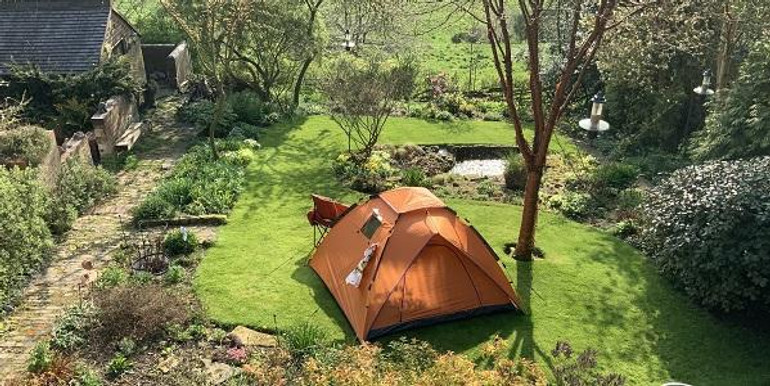How to avoid condensation in your tent or awning | OLPRO
Anyone can suffer from condensation in tents and it's not uncommon.
On many occasions, people have woken up to see a pool of water in their tent thinking it’s a leak, but in fact it’s a pesky case of condensation. As OLPRO tents are made from high specification waterproof materials (the fabric is 5,000 H/H), condensation will often be the biggest battle in keeping your tent dry. So here’s a bit more information about why condensation happens, and how to avoid condensation in your tent or awning.
What causes condensation when camping?
Firstly it's key to remember that condensation is increased by the presence of people - so the more people that are with you, the more likely you are to encounter condensation. In fact, just one person will produce up to one pint of condensation per night.
When the warm air inside of a tent hits the colder tent fabric, condensation is likely to occur. Warm air temperature inside of a tent can be caused by people, heaters and a lack of ventilation. Bigger tents with more people and additional heaters inside are likely to create a lot more condensation unless the tent is ventilated properly.
If you have a Breeze tent or awning, air circulates in the beams. If the outside air is much colder than inside your tent or awning then the cooling of the air in the beams is fast. The warm, humid, air inside your tent or awning will condensate onto the area of the beam. This moisture will appear as water droplets on the beams and can create pools of a water around the base of then. So, you have the warm air in the tent and cool air in the beams - creating condensation on the outside of the plastic beam that sits inside the sleeve. This will drip out of the bottom around the base of the beam.
If this happens make sure you don't have things around the bases of the beams. We have tested hundreds of tents and awnings where the customer believed it was leaking, and it was in fact down to condensation, so please look through the ways to avoid condensation below and you'll have a much drier camping trip.
On days where there is a substantial temperature drop, it can be challenging to prevent tent condensation forming. Rainy conditions can also increase the chances of condensation occurring, often leading to the appearance of a leaking tent. Rain water on the outside of the tent, or rain water evaporating off the out surface of the tent causes the temperature of the fabric to decrease, leading to more rapid condensation as the air inside the tent comes into contact with it.
So how can I ventilate my tent properly and avoid condensation?
- As a starting point, make sure that you’ve found all of the ventilation points on your tent in order to guarantee a good air circulation. If the weather is good enough, leave your doors and windows open whenever possible and make sure they aren’t being obstructed by sleeping bags, chairs or other furniture.
- When it starts raining be aware that by closing everything you are likely to cause condensation.
- Store your wet items outside when possible. Wet coats, towels, boots, swimming costumes will only add water to the air inside of your tent, so make sure wet items are given a proper chance to breathe... plus it'll help them to dry quicker.
- Heating the air inside of your tent will only increase the humidity. So ideally, you should help to keep yourself warm by wearing the right clothing and packing high-quality sleeping bags. Cooking inside of tents will also add moisture into the air, so make sure that cooking is kept to a minimum inside of a well-ventilated tent.
- Make sure you pitch in the right place. You’ll save yourself a lot of problems by simply pitching in an area which receives a natural breeze. Make sure you pitch at a distance from any water as well, as rivers and lakes will also increase the humidity of the air within your tent.
Oh no, my tent is wet from condensation, what should I do?
The best thing you can do is to wipe the walls down with a towel or cloth to remove the condensation from the tent fabric. Make sure to remove all wet items from the tent so that they can be dried properly and so that moisture isn’t circulated back into the air. And again, make sure you ventilate your tent, it’s all about letting the good air in!
Still having issues?
All OLPRO Tents and Awnings are 5,000 H/H so the fabric will never leak and every seam is heat sealed to stop water ingress through the points at which the tent is stitched. If you are certain the water is not from condensation then please contact us and we can advise further. Please note that all of our awnings and tents are now also supplied with a seam sealant kit which can you use if ever needed in the future.


 Euro
Euro
 Norwegian Krone
Norwegian Krone
 Swedish Krona
Swedish Krona
 Danish Krone
Danish Krone
